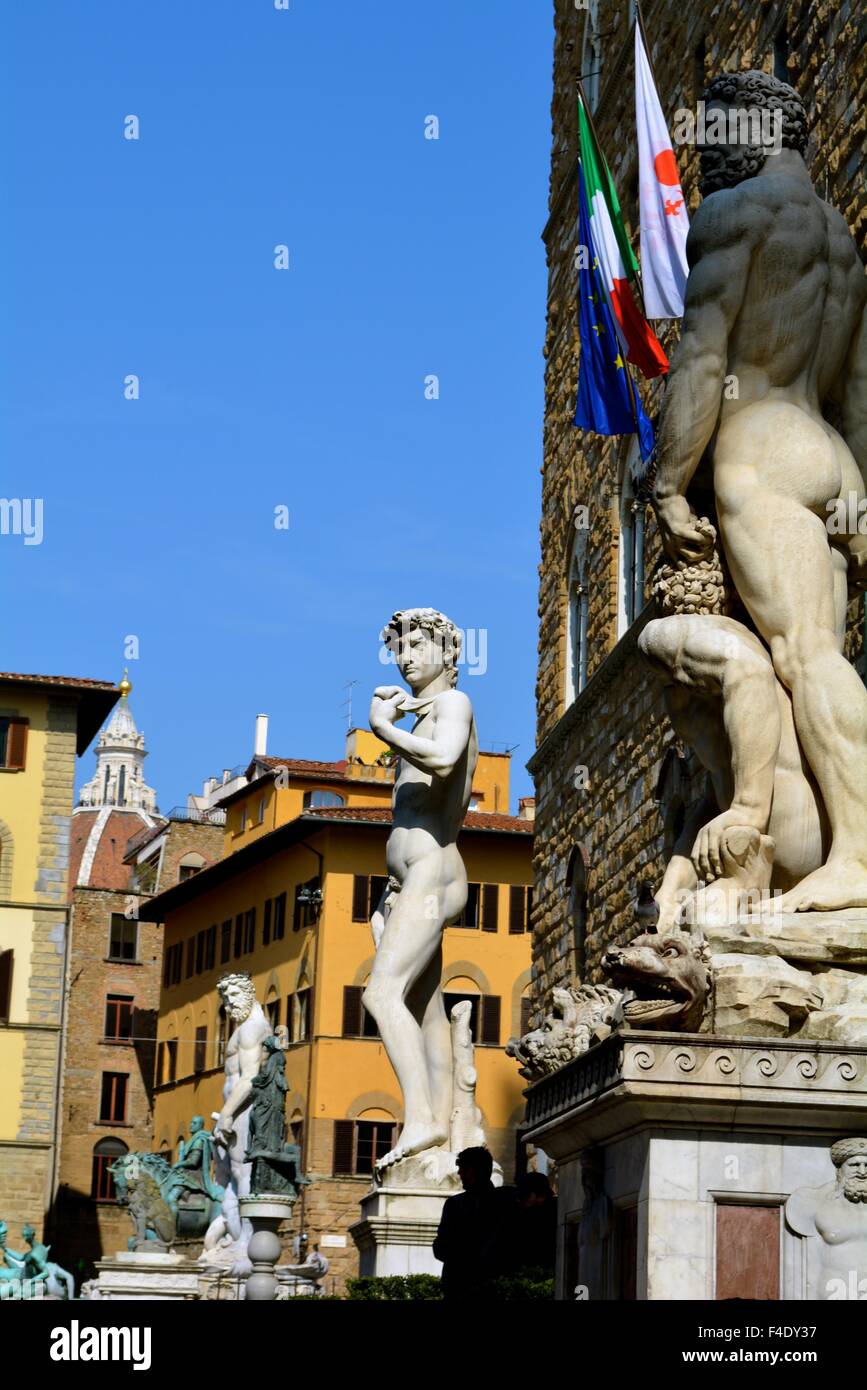
Statues in Piazza della Signoria in Florence italy Stock Photo Alamy
5. Palazzo Gondi. 6. Badia Fiorentina. 1. Palazzo Vecchio (Palazzo della Signoria) Palazzo Vecchio (Palazzo della Signoria) The Palazzo Vecchio, one of the major attractions in Florence, is easy to spot, with its 91-meter tower looking over the piazza. Its fortress-like exterior reflects its past, begun in the late 12th century, a time when.
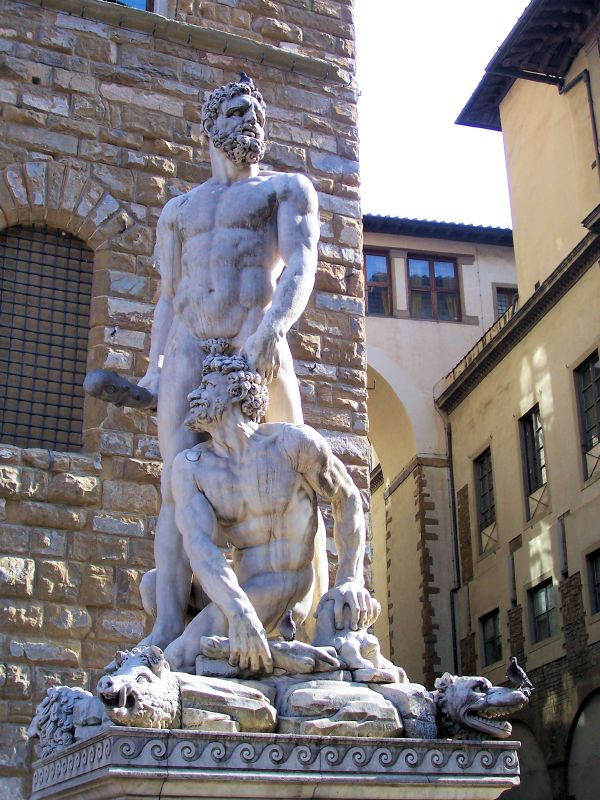
Student contest winner Piazza della Signoria’s Dueling Statues
Le statue di Piazza della Signoria non sono solo un insieme decorativo di altissimo livello, ma rappresentano anche un vero e proprio ciclo allegorico laico, unico nel suo genere al mondo, che avrebbe dovuto ispirare i governanti della città che si recavano a Palazzo Vecchio.. Piazza della Signoria a Firenze, in Laura Carlevaris, Monica.
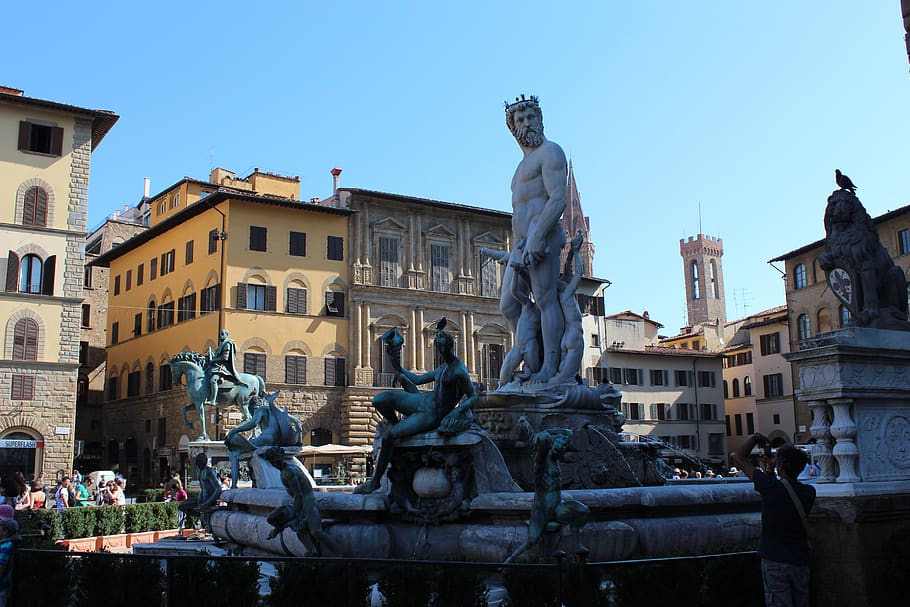
piazza della signoria, florence, italy, landmark, italian, tuscany
The statues around Piazza della Signoria twist and turn their heads and shoulders. Their hips and legs are unaligned as an illustration of shifting weights. Renaissance artists are inordinately fond of contrapposto as a new means to give figures in paintings and statues an overall dynamic and life-like appearance. Here are three of my favourites.

Piazza Della Signoria. Florence , Italy. Florence Italy, Wall Collage
As with most places in Florence, the Piazza della Signoria and Loggia dei Lanzi can be crowded, full of people sitting around on its steps, mostly unaware of the history surrounding them in these sculptures. Try visiting in the evening, when the Piazza is lit up, and in the winter, when there are far fewer crowds.. This statue honors Cosimo.

Piazza della Signoria Statue Of Liberty, Landmarks, Travel, Florence
In the Piazza della Signoria you will find the well-known loggia with statues that recall important events in the city and important myths. You will also find the Fountain of Neptune, the entrance to the Palazzo Vecchio, the replica of David, the famous bronze equestrian statue and the Gucci museum. Furthermore, the image gallery of the famous.

FlorencePiazza della Signoria, Sculpture Garden
Piazza della Signoria. Florence's most historically significant square, the Piazza della Signoria has long been a gathering place for Florentines and visitors. In the shadow of the Palazzo Vecchio, the wide square has been a site for political rallies, festivals, and for the infamous "Bonfire of the Vanities" during the 15th century.

Piazza della signoria Firenze 🔙📷 • • • • florence italy
Hercules and Cacus by Baccio Bandinelli, Piazza della Signoria, Florence. Hercules and Cacus is an Italian Renaissance sculpture in marble to the right of the entrance of the Palazzo Vecchio in the Piazza della Signoria, Florence, Italy.. It has a complicated and highly political history, but the finished work is by the Florentine sculptor Baccio Bandinelli mostly from 1525 to completion in 1534.

Florence Florence, Piazza della signoria, Statue
During the long debate, nine different locations for the statue were discussed, and eventually the statue was placed in the political heart of Florence, in Piazza della Signoria. It took four days and forty men to move the statue the half mile from Michelangelo's workshop behind Santa Maria del Fiore Cathedral to the Piazza della Signoria.

The Piazza della Signoria, Florence London Traveller
The Piazza della Signoria has been the center of political life in Florence since the 14 th century with the prominent Palazzo Vecchio overlooking the square. It was the scene of great triumphs, such as the return of the Medici in 1530 as well as the Bonfire of the Vanities instigated by Savonarola, who was then himself burned at the stake here.

Le statue di Piazza Signoria (1) Firenze Notizie
The Loggia dei Lanzi, also called the Loggia della Signoria, is a building on a corner of the Piazza della Signoria in Florence, Italy, adjoining the Uffizi Gallery. It consists of wide arches open to the street.. (1866) and Rome (1871) to the kingdom of Italy.Underneath the bay on the far left is the bronze statue of Perseus by Benvenuto.
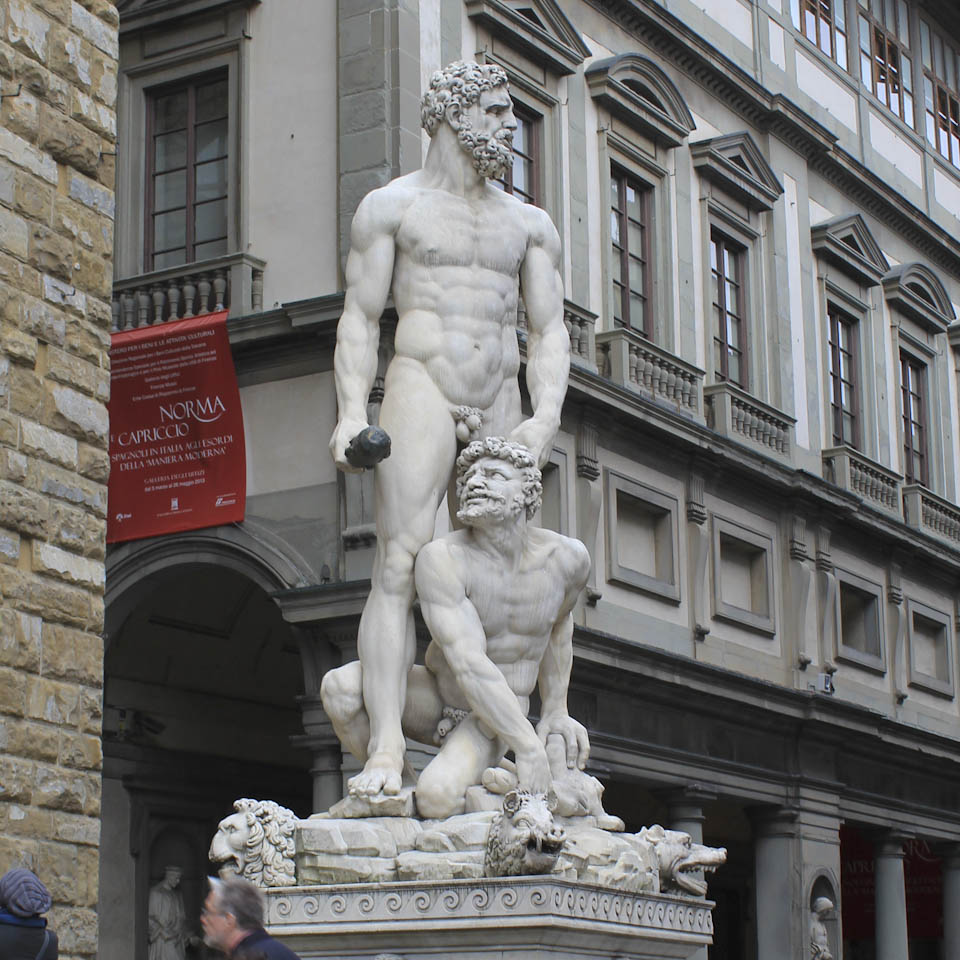
Statues in Piazza della Signoria in Florence Italian Notes
Piazza della Signoria è la piazza principale di Firenze, sede del potere civile e cuore della vita sociale della città. Si trova nella parte centrale della Firenze medievale, a sud della cattedrale di Santa Maria del Fiore. In passato ha assunto diversi nomi, come piazza dei Priori o piazza del Granduca .

Piazza della Signoria Perseus Statue, Piazza della signoria
The Piazza della Signoria. The Piazza della Signoria has always been the focal point of the history of the Florentine Republic. It serves a public function, particularly by housing the Loggia dei Lanzi (lodge for public gatherings). The square is dominated by the Palazzo Vecchio (town hall) and its tower of Arnolfo.

Piazza della Signoria, Firenze, Italia Statue, Piazza della signoria
Piazza della Signoria (Italian pronunciation: [ˈpjattsa della siɲɲoˈriːa]) is a w-shaped square in front of the Palazzo Vecchio in Florence, Italy.It was named after the Palazzo della Signoria, also called Palazzo Vecchio.It is the main point of the origin and history of the Florentine Republic and still maintains its reputation as the political focus of the city.

Piazza della Signoria Florence Italy003 Piazza della signoria
Coordinates: 43°46′11″N 11°15′22″E. Monument of Cosimo I (1594) by Giambologna. The Equestrian Monument of Cosimo I is a bronze equestrian statue executed by Giambologna from 1587 to 1594, and erected in 1594 in the Piazza della Signoria in Florence, region of Tuscany, Italy.
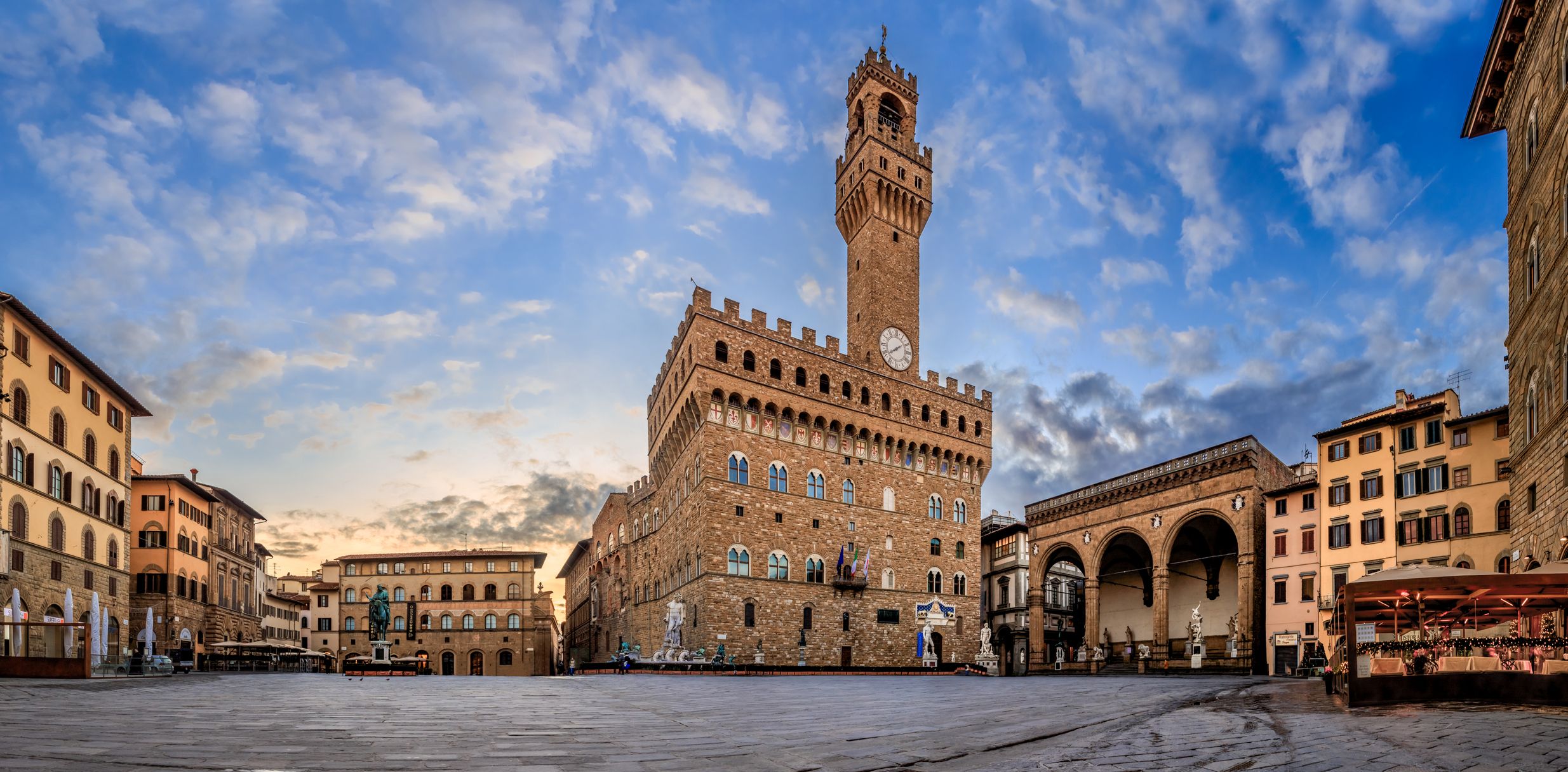
Os encantos da Piazza della Signoria
Piazza della Signoria has been the political heart of Florence for centuries.. This one is a copy but it stands exactly where the original was placed from 1504 until 1873 when the city of Florence moved this world-famous statue across town to the Accademia Gallery. David, the shepherd boy who defeated the giant Goliath was frequently used as.

Piazza Della Signoria, Italy Traveling with JC
THE STATUES UNDER THE LOGGIA DELLA SIGNORIA, ALSO CALLED "DEI LANZI". Built at the turn between the 13th and 14th centuries as the seat of the Priors, the oldest part of Palazzo Vecchio was originally designed by Arnolfo di Cambio (1245-1302). The later additions of the 15th and above all of the 16th centuries changed the scale of the rear part.